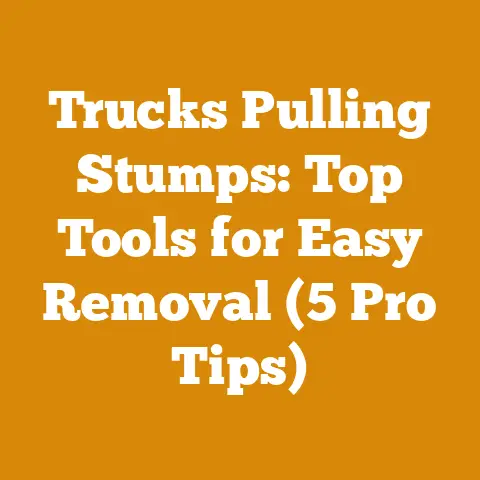What Happens If There Is Too Much Oil In A Chainsaw (Guide)
Operating a chainsaw requires careful attention to lubrication.
Failing to properly oil your chainsaw can lead to a host of issues that reduce performance and shorten the life of your equipment.
Whether you’re a beginner learning how to safely use this powerful tool or a seasoned pro looking to prevent issues with your saw, this guide has the solutions and preventative information you need.
Let’s get started!
What is Chainsaw Bar Oil and What Does it Do?
Chainsaw bar oil, also known as chain oil, serves one very important purpose—lubrication.
As the chain rotates around the guide bar, it needs constant lubrication to minimize friction.
Without oil, the chain would quickly wear out through contact with the guide bar, causing extensive damage over time.
Chainsaw bar oils contain tackifiers that help the oil stick to the chain as it travels around the bar and flies off the tip.
This clinging ability prevents wasted oil sling off and keeps lubrication consistent.
These oils also have high viscosity to stay in place on hot engine parts without getting thin and dripping off.
They are specially formulated to resist being washed away by sawdust or sap buildup as you cut.
Using the manufacturer’s recommended bar and chain oil is essential to proper lubrication and long equipment life.
Never substitute with used motor oil, gasoline, or other lubricants not designed specifically for chainsaw bar oil application.
What Happens When You Use Too Much Chainsaw Oil?
While oil is undoubtedly necessary for chainsaw function, it is possible to use too much.
Over-oiling your chainsaw can lead to a number of issues:
Excess oil accumulation – Oil that does not fling off the chain will accumulate inside the body of the saw.
Pooling oil can contact hot engine parts and combust.
This can reduce performance and poses a fire hazard in extreme cases of buildup.
Excess oil sling – Oil flung off the chain at high speeds can coat everything near the saw when too much is used.
This oil mist can coat surfaces in your workspace and the operator.
Premature wear – Too much oil attracts more sawdust, debris, and sap buildup as you cut.
This can cause grit and grime to act as an abrasive on the bar, chain, and drive sprocket.
The added friction increases component wear.
Drive sprocket damage – Excess oil being slung around can soak into the drive sprocket cover and contact the sprocket.
Since this sprocket spins at very high speeds, oil contact will deteriorate the sprocket over time.
Reduced performance – As oil accumulates inside the body of the saw, it can begin to contact the air filter.
Oil-soaked air filters have reduced air flow, robbing the engine of performance.
Higher operational costs – With oil being slung off the chain rapidly, excess oil use necessitates frequent refilling.
The cost of constantly replenishing oil supply adds up.
Diagnosing Issues Caused by Over-Oiling
If you suspect your chainsaw oiling habits may be causing issues, here are key signs to look for:
Excess oil dripping – Oil pooling inside the body may leak out around clutch covers, the chain brake, or the underside of the saw.
Examine your saw for evidence of oil drips or accumulation.
Blue smoke – Oil dripping onto hot engine parts may combust and produce blue smoke emanating from the muffler or saw body.
Misty spray – Observe the saw in action and look for a fine mist of oil spraying off the tip of the bar and chain, coating anything nearby.
Buildup of debris – An over-oiled chain attracts sawdust, dirt, and other debris as you cut.
Inspect the chain for heavy buildup of grime lodged between links.
Premature stretch – Chains stretched from wear will begin to sag below the guide bar.
Measure sagging at the underside of the bar tip.
Darkened drive sprocket – The drive sprocket may appear dark blackened from oil contact rather than bright metal.
By diagnosing issues early, over-oiling damage can be minimized by adjusting oil application.
Tips for Proper Chainsaw Oiling
Here are key tips for oiling your chainsaw correctly to prevent waste, excess, and potential damage:
Consult manufacturer guidelines – Chainsaw manuals indicate bar length to oil pump ratios for ideal lubrication levels.
Follow their specs for your saw model and hardware.
Upgrade oil pump components – Aftermarket upgraded oil pump worm gears allow for reduced oil output.
This provides precision adjustment not possible from factory stock parts.
Use narrow kerf bars & chains – Narrow kerf hardware has less space between cutters needing lubrication.
Automatically less oil is required compared to standard 3/8 or .404 bars and chains.
Install auxiliary oil reservoirs – Small oil tanks mount below the saw body with adjustable drip rates onto the bar.
This provides constant oil without engine pumping.
Routinely inspect hardware – Check chains for adequate lubrication between links without dripping buildup of oil and debris around the rivets.
Clear debris frequently – Use a flat file to routinely clean the bar groove and keep oil passages free of obstructions to maintain flow.
Match oil viscosity for weather – Colder temperatures may require slightly heavier viscosity oils that cling to the chain rather than slinging off at high RPM.
Troubleshooting Chainsaw Oiling Issues
If you notice symptoms of inadequate lubrication or leaking/slinging oil, consider the following troubleshooting steps:
Check oil tank level – Confirm the oil tank has ample lubricant.
Allow time for oil to reach the pump and prime the system.
Replace oil filter plug – Small oil passage filter screens can become clogged.
Replace these filter plugs.
Inspect oil lines – Damaged or disconnected hoses will prevent oil transfer.
Check for cracks and secure connections.
Test oil pump functionality – Remove chain/bar and start saw to isolate flow.
Consult your operator’s manual for correct diagnosis procedures.
Replace worn pump worm gear – The small gear in the oil pump loses precision over time.
Install new worm gear for regulated flow.
Upgrade hardware components – Use manufacturer recommended bar/chain combinations that optimize oil spread.
Modify lubrication – Consider auxiliary oiling systems or upgraded oil pump components for ideal flow rate.
Preventing Chainsaw Oiling Problems
You can take the following preventative measures to avoid many oil-related issues:
Follow break-in procedures – When using new bars, chains, and drive sprockets, follow the manufacturer break-in protocol.
Tune up your saw – Well-tuned saws have less friction and require less lubrication between moving parts.
Use high-quality oils – Premium oils withstand higher temperatures without breaking down at friction points or slinging off chains.
Install chain catchers – Attachments that catch loose chains reduce damage if lubrication failure occurs.
Let bars cool before storing – Heat from operation may allow oil residue to drip from the bar after use if stored immediately.
Clean guide bars routinely – Remove debris, sap, and grit often to prevent wearing down lubricated surfaces.
Rotate guide bars periodically – Balances wear by alternating usable bar sides to extend the bar’s service life.
Upgrade drive sprockets – Aftermarket sprockets with rimmed edges prevent destructive oil contact.
FAQ About Chainsaw Oiling Issues
New and experienced chainsaw owners alike may find themselves with lingering questions about lubrication best practices.
Here are answers to some frequently asked questions:
Q: Why does my chainsaw smoke with a new chain and bar?
A: Some smoke during the break-in process is normal as machine oil and residues burn off.
If thick smoke persists, reduce oil flow until the chain is lubricated without excess.
Q: How often should I add bar oil?
A: Check oil levels each time you refuel your saw.
Top off the tank to prevent it from running dry during operation.
Q: Can I use other oil instead of bar oil?
A: No.
Only use ripping chain oils designed for chainsaw lubrication.
Motor oils lack tackifiers that allow the oil to stick during chain rotation at high speeds.
Q: Where can oil leak from if my saw is over-oiled?
A: Excess oil can leak from the clutch cover, chain brake band area, spark plug opening, and underneath the saw body.
Q: Does the oil pump ever need to be replaced?
A: With normal wear, oil pump components may need replacement every 3-5 years.
Worn parts reduce flow precision.
Conclusion
Proper oiling is essential to maximizing your chainsaw’s performance and extending its operational lifetime.
Following the tips and best practices outlined in this guide will allow you to operate your chainsaw safely, efficiently, and optimize the use of bar and chain oils.
Remember to consult your operator’s manual, monitor your saw during use, routinely inspect and clean components, and properly store equipment after each use.
If issues arise, utilize the troubleshooting advice provided to quickly get your chainsaw back up and running at peak condition.
With just a little vigilance and preventative care, your chainsaw will provide many hours of reliable service.






